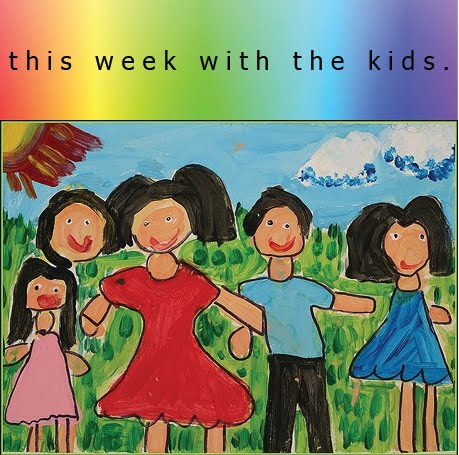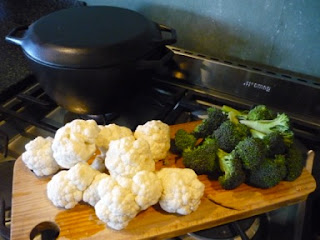My husband LOVES potatoes, but I have never been so smitten. Now, having read the above, I need to reform my view.
The potato has been labelled as 'fattening', but the truth is potatoes are not fattening. The fattening comes from what is put on them and the quantity of these additions.
If you are interested in what the seven nutrients essential to sustain life, are, click here-http://ezinearticles.com/?7-Essential-Nutrients&id=1807134 The nutrient potato is missing is fat.
BACON AND SPINACH SALAD WITH POTATOES. (60mins to prepare and cook)
Serves 5 adults.
I cooked for 4 adults but it generously stretched to feed 5 adults when my daughter and baby arrived - I just added extra potato to cover her.
As I have mentioned before, the best nutrients in some fruit and veggies lie just under the skin - this is the case with potatoes so eat them in their skin, and avocado is the same, so scrape all of it out of the skin. Don't let the garbage bin eat better than you!
Nutritional benefits you gain in this meal, are, Vitamin A, Vitamin B1, B2, B3, B6, B12, Vitamin C, Vitamin D, Vitamin E, and a great Vitamin K source. Great supply of Protein, Iron, Phosphorous, Selenium, Calcium and Carotenoids.
Health benefits from this combination of foods is amazing in number, from being a great brain builder, strengthener of the nervous system and myelin sheath around your nerve cells, to assisting in good heart health, lowering blood pressure, cholesterol levels, and preventing stroke and heart attacks. There are great benefits to the immune system and protection from cancer particularly of the breast and prostate. But the overall huge health benefit is for the eyes with the prevention of cataracts, macular degeneration, conjunctivitis, and improvement to eyesight, along with assistance for skin problems such as acne and ageing wrinkles.
INGREDIENTS:
Slurp of Olive oil
500g Bacon
1 Avocado
1 packet Spinach
1 Coriander plant
1 Large Red Onion
250g Mushrooms
1 bunch Asparagus
4 Large Potatoes
250g Sour Cream
PREPARATION AND COOKING:
1. Turn on oven 180*C/350*F fan on. Wash 1 large Potato for each person and cook 1 hour in the oven.
2. Peel and thin slice Onion.
3. Wash and slice Mushroom, Asparagus, Spinach and Coriander
I snap a small section off the bottom of each stalk to get rid of the tough section at the end.
4. Using scissors, cut the rind off the Bacon. Cut Bacon into strips.
5. Heat a large pan and add a slurp of Olive Oil.
6. Add Onion to the pan, lid on and cook 5 mins.
Cut
Avocado in halves, remove the stone, then cut fruit into chunks and
leave in the skin until needed.
Spoon
Sour Cream into serving dish. I only used 1/2 the amount I bought.
2Tablespoons per person is ample and there is no health risk with
this quantity.
7.
Shovel Onion onto one side of the pan and add enough Bacon strips to
cover the pan, lightly browning strips and turning to brown on the
second side. You will need to do this in loads as all the Bacon
strips won't fit into the pan at once.
Meanwhile the Red Onion gently cooks away. Return all the Bacon to the pan when it all is cooked.
8. Add Mushrooms and stir through. Lid on to cook 5mins.
9. Add Asparagus and Coriander and stir.. Lid on to cook 3mins.
10. Add Spinach and Avocado, stir. Lid on for 2mins, then mix with tongs, turning until Spinach is lightly cooked. The Avocado will break down, partially into a type of sauce.
MINTED PINEAPPLE DESSERT (9mins to prepare and cook)
Serves 5+ adults.
This dessert is quick to prepare and prefect to finish a meal with for your digestive system's sake, and it's especially beautiful through the hot summer months.
Nutritional benefits from this dessert are, a huge source of Vitamin A, Vitamin C and Calcium.
Health benefits. Both mint and pineapple are strong fighters against colds, and as said above, help in digestion. Other benefits include, building strong bones, maintaining good gum and skin health, including combatting acne, a breath freshener, and headache and nausea reliever.
INGREDIENTS:
1 fresh Pineapple
2 - 3 stems Mint (these were from our garden)
1/8 cup Sugar
PREPARATION AND COOKING:
1. Cut skin off the pineapple.
2. Slice Pineapple as you prefer - thin or thick sliced.
3. Wash Mint and put into a mortar and pestle along with the Sugar. Carefully at first, then more purposefully, smash the Mint and Sugar in the mortar and pestle.
4. Cut Pineapple slices into 1/2s or 1/4ths so they are easy to pick up and eat. Arrange pieces on a plate.
5. Spoon the Mint Sugar onto the Pineapple pieces and refrigerate till needed.
TOTAL COST OF THIS MEAL TO FEED 5 ADULTS = $28.85NZ
Ingredients were bought at Pak'N Save Silverdale, Auckland New Zealand, Monday 26th November 2012.
I have not included the cost of a "slurp of Olive Oil", "1/8 cup Sugar", or "2 - 3 stems of Mint".
Here are the artsy photos I enjoyed taking.
THISWEEKWITHTHEKIDS~ cook a salad together.
Cathy








































































